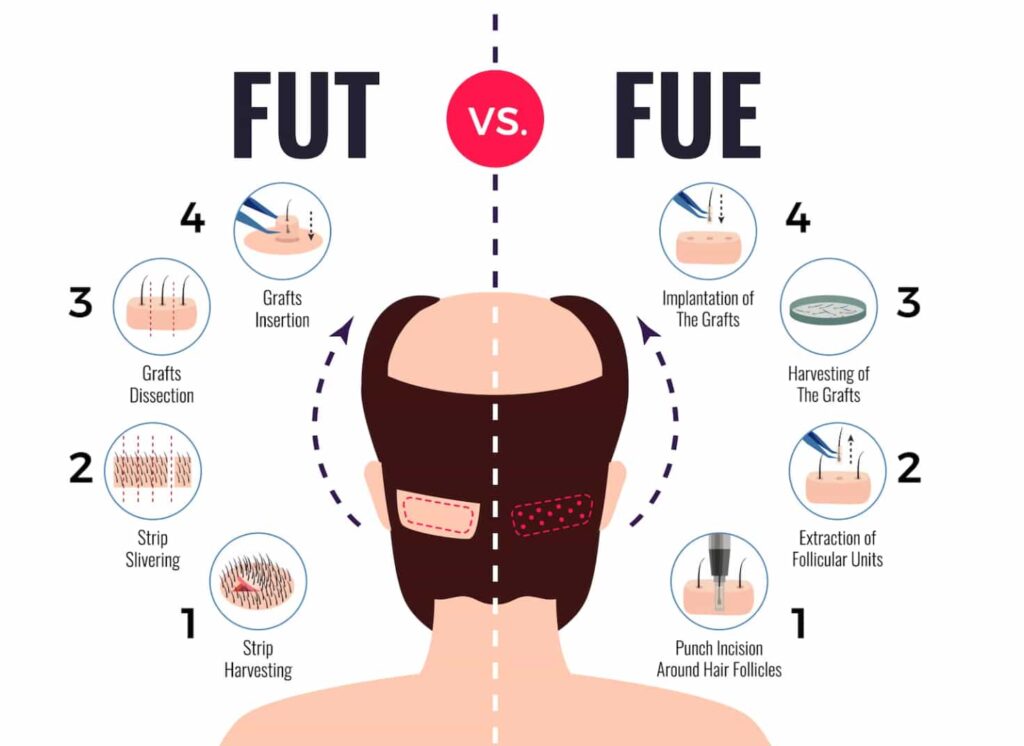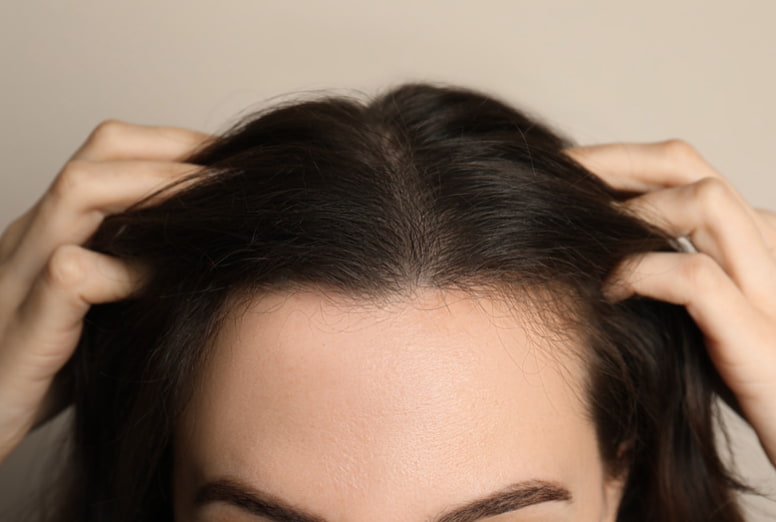According to the 2022 practice census results by the International Society of Hair Restoration Surgery (ISHRS), 1.8% of the patients had a hair transplant for “transgender needs.” Transgender patients can seek a number of hair transplants not just for the scalp but the face and the body as well.
Both patients undergoing male-to-female (MTF) or female-to-male (FTM) transition can undergo this surgery for different reasons, such as changing the shape and/or the position of the hairline, implanting facial hair, improving overall density, etc.
In this guide, you’ll learn more about the important considerations for a transgender hair transplant, whether it’s for MTF or FTM, how it’s done and what it can cost you.
What Is A Transgender Hair Transplant?
A transgender hair transplant can alter the appearance and/or presence of hair on a person’s body through the use of Follicular Unit Extraction (FUE) or Follicular Unit Transplant (FUT) techniques.
In FUE surgery, individual follicular units are extracted from the back and/or sides of the head, called the donor areas. These are then transplanted into the bald spots.
In FUT, on the other hand, a strip of skin is cut out from the back of the head. From that, individual hair grafts are taken and implanted into the recipient areas.

Generally, FUE is more popular than FUT because the former doesn’t leave a linear scar on the back. FUT requires stitches, and its recovery can be more difficult.
Transgender patients can experience hair loss due to a number of reasons for which they might want to seek hair restoration surgery.
For instance, one study published in Transgender Health reported that almost 76% of transgender men developed male pattern baldness or androgenetic alopecia 2 years after gender-affirming hormone therapy (GAHT).
Of them, about 26% of them had a moderate to severe case of it (which can be assessed through a Norwood-Hamilton scale). Additionally, there was a 16% increase in female pattern hair loss in transgender women after GAHT.
Hair Transplants For Female-To-Male (FTM)
Female-to-male hair transplants may involve:
- increasing the density of the scalp hair
- beard hair transplant
Depending on the needs of the patient, other procedures can also be performed, such as an eyebrow hair transplant. However, it’s important to make your expectations clear during the consultation. Reference images can help explain the cosmetic goals better to the surgeon.
In any case, different hair transplant techniques can be used to perform the above procedures, although FUE is preferred. It’s possible to have a scalp transplant together with a beard transplant, but an important thing to note here is the strength of the donor area.
For both scalp and beard transplants, the donor area is the same – the back and sides of the scalp. There needs to be enough hair there to achieve good coverage and density. If that’s not the case, the patient might have to choose between a beard or scalp transplant.
Chest and pubic hair transplants can also be done to improve the density of the hair in that area. However, these two can also require a significant number of grafts (2,000 to 3,000 for the chest and 1,000 to 1,500 for the pubis). Only a surgeon can tell if you’re a suitable candidate for a particular procedure.
Hair Transplants For Male-To-Female (MTF)
A common male-to-female hair transplant is hairline feminisation and lowering. According to a study published in Plastic and Reconstructive Surgery – Global Open, males tend to have a “high frontal and M-shaped hairline,” while women’s hairline is “round and well-proportional” to the mid and lower face.
Keeping these differences in mind, male-to-female patients can seek to lower their hairline while making it more rounded at the same time. Additionally, they might want to improve the overall density due to male pattern baldness before the hormonal changes.
Hair from the back and sides of the scalp can be taken from this as well. But in male-to-female patients, if there’s not enough donor hair, the surgeon may recommend using facial or even body hair as well.
However, this technique has a lower success rate. Unfortunately, it is difficult to ensure graft survival.
Other than a scalp hair transplant, again, depending on the needs of the patient, it might also be possible to undergo an eyebrow, pubic transplant, etc.
What Are The Differences Between Male And Female Hairlines?
A study published in Facial Plastic Surgery noted several differences between a male and female hairline. Some of the characteristics of a male hairline are:
- It’s 7-8 cm above the glabella (the area between the eyebrows above the nose).
- It’s M-shaped with a low mid-point and temple recession.
In females, the hairline can have the following traits:
- It’s 5-7 cm above the glabella.
- It usually has a widow’s peak.
- It commonly has “lateral mounds” – small humps along the hairline front.

Still, there can be a lot of variations in the hairlines of different people. Experienced surgeons know how to design hairlines that look natural, taking different factors into account, such as age, face shape, structure of forehead, etc.
What Does A Feminine Hairline Look Like?
A feminine hairline can have a shorter distance from the area in between above the eyebrows. It might also be rounder and softer around the edges. However, as mentioned above, there can be variations, such as unevenness or the presence of a distinct v-shaped widow’s peak.

There’s no one set hairline design. It can vary depending on the face shape, age, forehead structure, facial muscles, etc. An experienced surgeon can ensure that your hairline is properly feminised by accounting for these and other factors.
How Can You Get A Gender-Affirming Hairline?
A hair transplant, with either FUE or FUT technique, can help change the overall shape of the hairline and also improve hair density if you’ve previously lost hair due to pattern baldness.
Other than transplantation surgery, however, a scalp advancement or hairline lowering surgery might also be recommended to you (depending on your needs).
A study published in The Laryngoscope reported that this surgery can help reduce the size of the forehead and help you get rid of bald spots, especially in the temple areas. The researchers performed this surgery on patients who were undergoing facial feminisation.
How To Grow Your Hair Out After MTF Transition?
You can let your hair grow out naturally, but it’s a good idea to talk to a hairstylist and discuss your goals with them. If you have bald spots as a result of male pattern baldness, you must talk to your doctor for its treatment.
According to a study published in Transgender Health, reducing “male-pattern hair growth” is one of the goals of hormone therapy for individuals transitioning from male to female.
The case study also reported the reversal of pattern hair loss in an MTF patient who was on estrogen and spironolactone. Different factors can affect such outcomes, so, again, make sure you talk to a medical professional first.
What Is The Cost Of Transgender Hair Transplants?
In the UK, a single hair graft can cost you about £5, so the cost of transgender hair transplant surgery can largely vary depending on the number of grafts you need. It can be as follows:
| Number of grafts | Cost of transgender hair transplant |
| 500 | £2,500 |
| 1,000 | £5,000 |
| 1,500 | £7,500 |
| 2,000 | £10,000 |
| 2,500 | £12,500 |
| 3,000 | £15,000 |
| 3,500 | £17,500 |
| 4,000+ | £20,000+ |
Furthermore, a transgender hair transplant cost can vary depending on how complex the procedure will be (such as an unusual donor area). The location of the clinic and the experience of the surgeon can also make a difference.
To get an idea of the number of grafts you’ll need, you can use a graft calculator, however, keep in mind that only your surgeon can provide you an exact estimate after assessment.
While some clinics offer flexible payment options, the surgery can still be quite expensive in which case you can also consider getting a transgender hair transplant in Istanbul, Turkey.
A hair transplant in Istanbul can cost you around £1,500-£2,000; the price is generally lower because of currency exchange and economic differences.
Conclusion
Hair transplant for transgenders is possible, whether it’s for feminisation or masculinisation. It can be used to transplant hair on the scalp, face and even body. A body hair transplant can be somewhat more complicated, which is why it’s important to find an experienced surgeon.
To make sure that they can deliver your desired results, it’s a good idea to check out their portfolio and ask them about all the details (including the risks, complications and success rates) of the procedure(s).
In any case, it’s important to maintain open communication with the surgeon so the goals and expectations are clearly understood. The treatment plan will be designed accordingly.
Reviewed and Approved by Trichologist Yaprak Yazan


